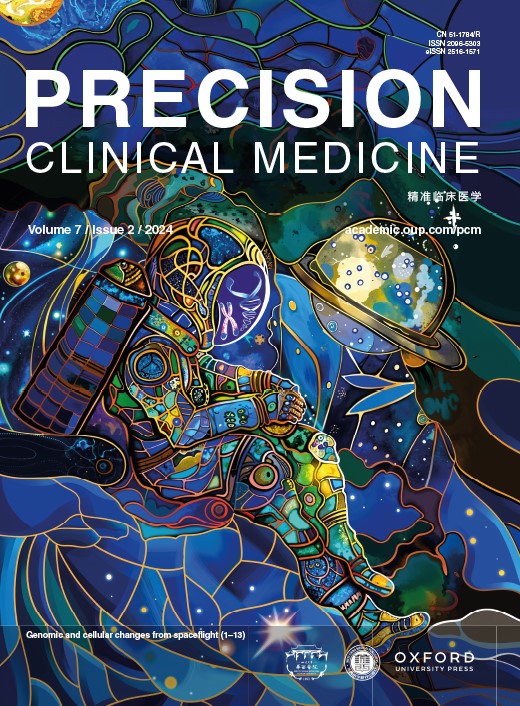RNA-based therapies in animal models of Leber congenital amaurosis causing blindness
IF 5.1
4区 医学
Q1 MEDICINE, RESEARCH & EXPERIMENTAL
引用次数: 1
Abstract
Abstract Leber congenital amaurosis (LCA) is a severe, genetically heterogeneous recessive eye disease in which ~ 35% of gene mutations are in-frame nonsense mutations coding for loss-of-function premature termination codons (PTCs) in mRNA. Nonsense suppression therapy allows read-through of PTCs leading to production of full-length protein. A limitation of nonsense suppression is that nonsense-mediated decay (NMD) degrades PTC-containing RNA transcripts. The purpose of this study was to determine whether inhibition of NMD could improve nonsense suppression efficacy in vivo. Using a high-throughput approach in the recessive cep290 zebrafish model of LCA (cep290;Q1223X), we first tested the NMD inhibitor Amlexanox in combination with the nonsense suppression drug Ataluren. We observed reduced retinal cell death and improved visual function. With these positive data, we next investigated whether this strategy was also applicable across species in two mammalian models: Rd12 (rpe65;R44X) and Rd3 (rd3;R107X) mouse models of LCA. In the Rd12 model, cell death was reduced, RPE65 protein was produced, and in vivo visual function testing was improved. We establish for the first time that the mechanism of action of Amlexanox in Rd12 retina was through reduced UPF1 phosphorylation. In the Rd3 model, however, no beneficial effect was observed with Ataluren alone or in combination with Amlexanox. This variation in response establishes that some forms of nonsense mutation LCA can be targeted by RNA therapies, but that this needs to be verified for each genotype. The implementation of precision medicine by identifying better responders to specific drugs is essential for development of validated retinal therapies.Leber先天性黑朦致盲动物模型的rna治疗
Leber先天性黑内障(Leber congenital amaurosis, LCA)是一种严重的遗传异质性隐性眼病,其中约35%的基因突变是编码mRNA中功能缺失过早终止密码子(ptc)的框内无义突变。无义抑制疗法允许ptc的读取,从而产生全长蛋白。无义抑制的一个限制是无义介导的衰变(NMD)降解含有ptc的RNA转录物。本研究的目的是确定抑制NMD是否可以提高体内无义抑制的效果。采用高通量方法,在隐性cep290斑马鱼LCA模型(cep290;Q1223X)中,我们首先测试了NMD抑制剂Amlexanox与无糖抑制药物Ataluren联合使用。我们观察到视网膜细胞死亡减少,视觉功能改善。有了这些阳性数据,我们下一步研究了该策略是否也适用于两种哺乳动物模型:Rd12 (rpe65;R44X)和Rd3 (Rd3;R107X) LCA小鼠模型。在Rd12模型中,细胞死亡减少,RPE65蛋白产生,并改善了体内视觉功能测试。我们首次确定Amlexanox在Rd12视网膜中的作用机制是通过降低UPF1磷酸化。然而,在Rd3模型中,没有观察到阿塔鲁伦单独使用或与氨lexanox联合使用的有益效果。这种反应的变化表明,RNA疗法可以靶向某些形式的无义突变LCA,但这需要对每种基因型进行验证。通过确定对特定药物有更好反应的精准医学的实施对于开发有效的视网膜疗法至关重要。
本文章由计算机程序翻译,如有差异,请以英文原文为准。
求助全文
约1分钟内获得全文
求助全文
来源期刊

Precision Clinical Medicine
MEDICINE, RESEARCH & EXPERIMENTAL-
CiteScore
10.80
自引率
0.00%
发文量
26
审稿时长
5 weeks
期刊介绍:
Precision Clinical Medicine (PCM) is an international, peer-reviewed, open access journal that provides timely publication of original research articles, case reports, reviews, editorials, and perspectives across the spectrum of precision medicine. The journal's mission is to deliver new theories, methods, and evidence that enhance disease diagnosis, treatment, prevention, and prognosis, thereby establishing a vital communication platform for clinicians and researchers that has the potential to transform medical practice. PCM encompasses all facets of precision medicine, which involves personalized approaches to diagnosis, treatment, and prevention, tailored to individual patients or patient subgroups based on their unique genetic, phenotypic, or psychosocial profiles. The clinical conditions addressed by the journal include a wide range of areas such as cancer, infectious diseases, inherited diseases, complex diseases, and rare diseases.
 求助内容:
求助内容: 应助结果提醒方式:
应助结果提醒方式:


